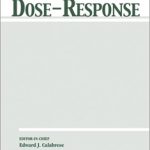John A. Ives, Wayne B. Jonas and Joyce C. Frye
Do serial dilutions really dilute?
Homeopathy, 2010, 99 (4), 229-230

The article by Chikramane et al. ‘Extreme Homeopathic Dilutions Retain Starting Materials: A Nanoparticulate Perspective’, in this issue reports the fascinating observation that high potency homeopathic remedies made from specific metals, prepared at two different commercial plants in India, contain measurable amounts of the starting material, even at 200c.1 We are all familiar with the simple calculations showing that a series of 1:99 dilutions done sequentially will produce a significant dilution of the starting material in very short order. Specifically, if the starting material is at one molar concentration (6.023 × 1023 atoms [or molecules) per litre], then at about the 12th centesimal dilution (12C) there should be no or very nearly no atoms (or molecules) left of the starting material. At 200c the likelihood of there being even one atom of the starting material approaches zero—if the process of dilution follows the normal assumptions. However, it seems those with those assumptions, we go astray.







